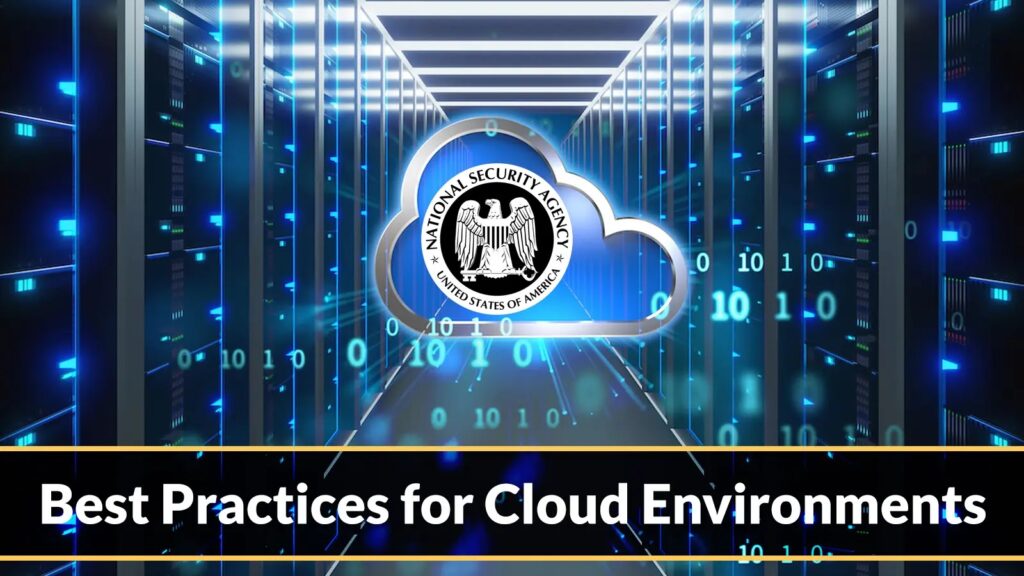Threat actors target cloud environments due to their wide acceptance and comprehensive storage of critical information.
Exploiting cloud security shortcomings could enable unauthorized access to sensitive data, infrastructure outages, or monetization.
The fact that systems are scalable and highly interconnected makes them good targets for cyber attacks.
Cybersecurity analysts at the National Security Agency recently released ten best security practices for cloud environments.
Ten best practices for cloud environments
NSA researchers recently released Cloud Security Mitigation Strategies in an effort to educate cloud users about important security practices. Threat actors mostly target cloud users as they move their data to cloud environments.
The document contains 10 Cybersecurity Information Sheets (CSIs), each focusing on a different approach.
For six of the ten strategies, the Cybersecurity and Infrastructure Security Agency (CISA) collaborates with the National Security Agency (NSA).
We have mentioned below the ten best security practices for cloud environments provided by the NSA:-
Supporting the Shared Cloud Responsibility Model: CSI educates on the cloud framework by clarifying the security responsibilities of both the CSP and customers in securing their chosen cloud instance. Use Secure Cloud Identity and Access Management Practices (in conjunction with CISA): CSI explains cloud identity threat management and suggests best practices for mitigation for organizations in the cloud. Use Secure Cloud Key Management Practices (in conjunction with CISA): CSI suggests key management options and best practices for using them. He emphasizes the importance of understanding the security responsibilities shared with Cloud KMS. Implementing Network Segmentation and Cryptography in Cloud Environments (in conjunction with CISA): CSI provides advice on applying principles in cloud environments that differ from on-premises networks. Cloud tech provides ZT infrastructure without specialized hardware. It primarily highlights best practices for using shared cloud features. Securing data in the cloud (in partnership with CISA): Securing cloud data is critical during enterprise migration. Understanding data sensitivity, choosing appropriate storage, and implementing security measures are key factors. This CSI provides an overview and practices for securing and auditing cloud storage. Defending Continuous Integration/Continuous Delivery Environments (jointly with CISA): NSA and CISA offer this CSI to strengthen cloud DevSecOps defenses. It guides the integration of security into DevOps CI/CD environments, leveraging government guidance for robust CI/CD cloud deployments. Enforce secure automated deployment practices through infrastructure like code: IaC, baselines, and golden images, which are templates for deploying resources across-premises and in the cloud. IaC automates deployment using code, including security policies. Basic lines and golden images provide safe starting points. Considering the complexities of hybrid and multi-cloud environments: CSI addresses the challenges in hybrid and multi-cloud implementation by offering solutions to mitigate the increasing complexity. Mitigating risks from managed service providers in cloud environments (in conjunction with CISA): MSPs manage IT services in the cloud, providing backup, infrastructure and security. They provide customized solutions, but using them increases cybersecurity risks. Manage cloud logs to effectively hunt for threats: Accessing a cloud tenant is complicated by virtualization, as security relies on immutable logs. Therefore, access policies, logs, and audits must be monitored. Organizations must manage logs for threat detection and compliance.
Cloud computing enhances the effectiveness and security of IT if deployed correctly.
However, data concentration attracts threat actors, so these guidelines will allow them to protect their cloud environment.
With Perimeter81 malware protection, you can block malware, including trojans, ransomware, spyware, rootkits, worms, and zero-day exploits. They are all incredibly malicious and can wreak havoc on your network.
Stay up to date with cybersecurity news, white papers and infographics. Follow us on LinkedIn and Twitter.



